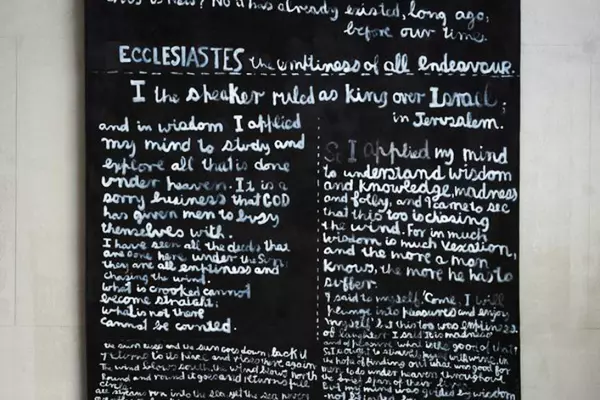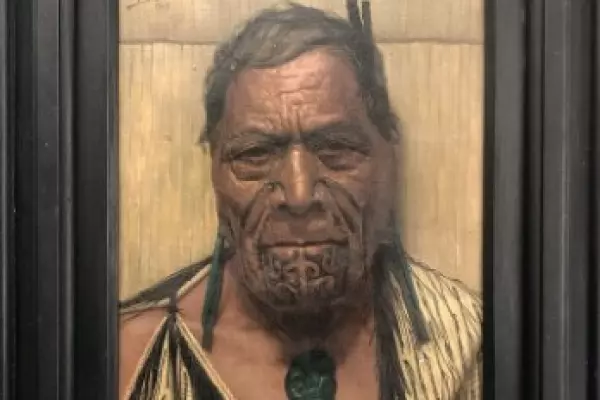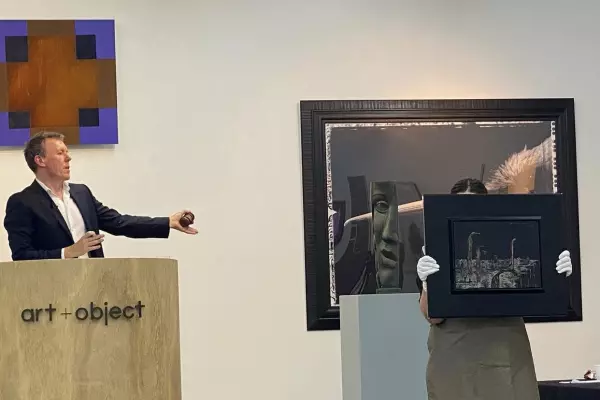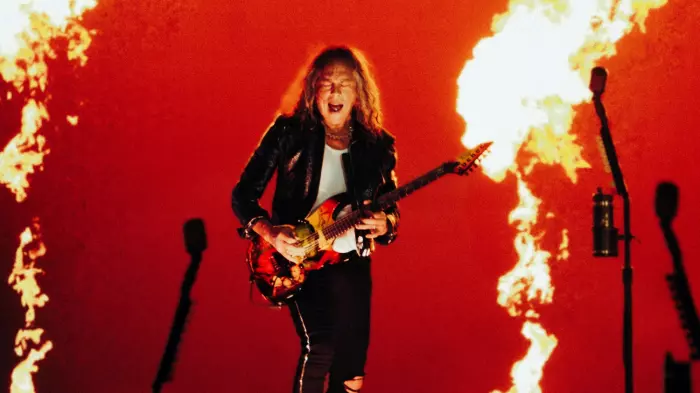A corporate art collection has always been a way of signalling the intentions and the motivations of a business – it’s public face, so to speak. Australia has its fair share of high-profile corporate collections, such as the one at Wesfarmers in Perth, which includes 800 museum-quality works spanning from the 1800s to the present day.
However, the collection at National Australia Bank (NAB) was assembled with probably the most virtuous of intentions of any of them. According to former National Gallery of Victoria (NGV) curator Robert Lindsay, the then National Bank of Australasia “very much wanted to be a forward-thinking organisation”, so it acquired contemporary art to say, “We are focused on the future.”
To start the collection in 1975, bank directors Sir Rupert Clarke and Sir Andrew Grimwade brought on as a consultant the Melbourne gallerist Georges Mora, who had a long history of championing contemporary artists, especially radical, hard-edged abstractionists.
On his advice, the bank acquired abstract, conceptual and colour field paintings by the likes of Sydney Ball, Roger Kemp and Lesley Dumbrell. Many of the artists were commissioned directly. At the time, some were struggling to make a living from their practice and the acquisition of their work for the bank’s collection was a turning point in their career. This was at a time when the Australian market was heavily focused on the more popular colonial or 19th century artists and the contemporary scene was dominated by the more famous practitioners such as Fred Williams, Charles Blackman and Arthur Boyd.
By 1982 – the year the bank and another merged to form the NAB – the collection had been recognised as an important snapshot of Australian art in the 1970s, and an exhibition was staged at the NGV. It was titled The Seventies: Australian Paintings and Tapestries from the Collection of the National Australia Bank. The cover painting of the exhibition catalogue was Chinook, by Dumbrell, who said the National Bank of Australasia's acquisition of her work in 1975 “meant a lot” as she had failed to sell anything in her first two solo exhibitions.
Although the NAB continued to expand the collection into the 21st century, it recently decided to auction off almost all of the 2500 works and allocate the proceeds as grants for communities affected by climate change. In an angry post on Facebook, artist Ben Quilty pointed out the irony of the bank doing this: it is, he alleged, one of the biggest financial facilitators of fossil-fuel developments.
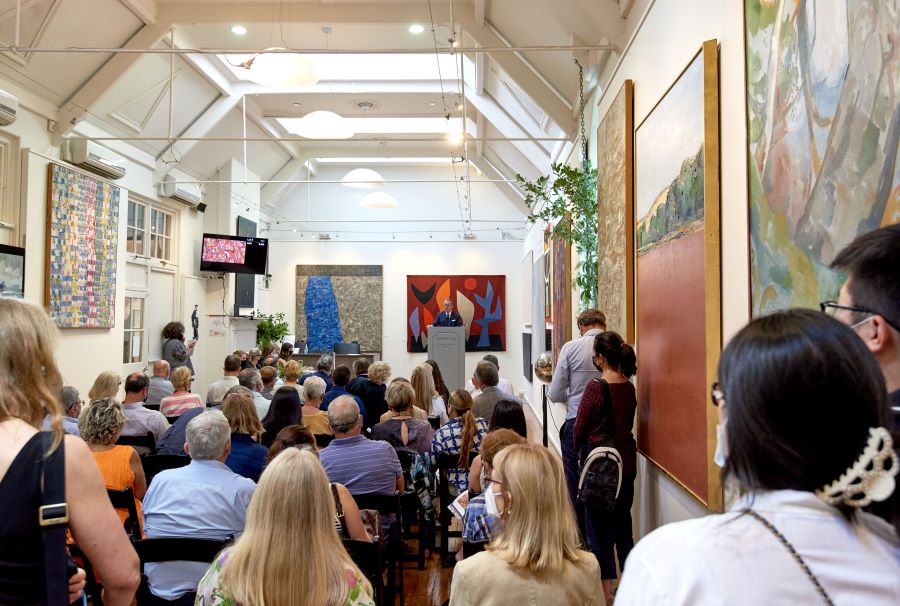 Leonard Joel auction house had 101 lots to sell on behalf on NAB.
Leonard Joel auction house had 101 lots to sell on behalf on NAB.
Last month in Melbourne, auction houses Deutscher and Hackett (D&H) and Leonard Joel (LJ) auctioned off the first release from the bank’s collection. D&H traditionally deals in the top end of the market while LJ covers the middle; D&H’s share of the collection was 79 works worth about A$5m and LJ had 101 lots worth more than A$1m (it will auction the remaining works at intervals during the year).
Although the bank focused heavily on collecting contemporary art, it had also acquired works from earlier periods and at D&H, some of the highest prices were achieved for these. Arthur Streeton’s 1920 landscape Blue Vista from the Sundial achieved $750,000 against a $300,000 low estimate, and Frederick McCubbin’s Williamstown Landscape 1909 sold for $460,000 from a base of $400,000. Top price at D&H was paid for Jeffrey Smart’s classic image The Footbridge, acquired by the bank in 1975, the year it was painted. The painting doubled its low estimate to sell for $800,000 under the hammer.
The following night at LJ, a packed auction room plus many more bidders online sought to secure a piece of history. The pre-sale estimates for this section of the NAB collection were mainly under $20,000, but many artists achieved some jaw-dropping results. A work by Judy Cassab, a Melbourne painter whose work generally sells for under $10,000, was one of the top lots of the night. Her Red Desert 1972 realised $70,000 against an estimate of $6000 to $9000. Likewise, Greg Johns, who produces beautifully balanced sculpture in corten steel, saw one of his works race past the $6000 low estimate to sell for $75,000.
The bank also had an important collection of tapestries which Georges Mora was instrumental in commissioning. Nine were woven over an eight-year period by Melbourne’s Victorian Tapestry Workshop under the direction of Mora and workshop director Sue Walker.
Traditionally, tapestries can be difficult to sell, because they are often very large, site-specific, and suited to public spaces with towering ceilings and a lot of blank wall space to fill. The LJ sale offered nine and it was one of these that fetched the top auction price on the night. Woven with wool and silver, gold and bronze lurex thread by Mirka Mora (Georges Mora’s first wife), it sold for $160,000, against a low estimate of $35,000.
Overall, the sales across both locations achieved a hammer price of $10,551,900, and there was only one unsold lot. And what was the result for Lesley Dumbrell’s Chinook, the work that put her on the artistic map of 1970s Op-Art painters? Its pre-sale estimate was $15,000 to $20,000 but it sold for $50,000. One can only imagine how thrilled the 80-year-old artist was with the result.
* The last large-scale sell-off of a corporate art collection was in 2005, when Foster’s sold its holdings at Sotheby’s for more than $13m. The top prices were taken by Arthur Streeton and Frederick McCubbin, but many more artist records were broken in the blockbuster sale.
All prices given are in Australian dollars, hammer only and do not include the buyer’s premium of approximately 25%.
Briar Williams is a fine arts valuer at Art Valuations NZ




